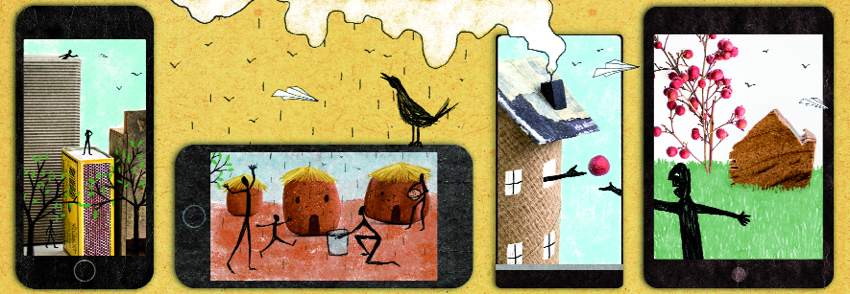Building more and better peace requires efforts focused in urban settings, where the work of private and public players will be needed to establish synergies and alliances that place the human right to peace front and centre in national and international agendas.
Since 1947, when the international system designed by the great victors at the end of the Second World War was disrupted by the outbreak of the Cold War and the proliferation of nuclear weapons, international relations have changed profoundly, particularly since 1990 with the end of the Cold War.
In late 2016, when thinking about how to reduce the number of wars and achieve a greater presence of peace, and about what role cities must play to realise these goals, requires briefly recalling those aspects that have been changing. Notable among them are the following, which are neither intended to be comprehensive nor presented in chronological order: armed conflict far from the main stage of confrontation between superpowers (Europe); progressive decolonisation; the rise of the Third World and later the Global South; the progressive significance of economic relations and factors and relations at the forefront of diplomacy and security; the appearance of new private players (companies, civil society organisations and networks to defend various interests) and public players (proliferation of States due to decolonisation, of international organisations and of non-central powers such as cities, regions and autonomous communities); the end of bipolarity and the emergence of a multi-centre system essentially based on social and economic relations; the resurgence of armed conflicts in Europe; the impact of the 11 September 2001 attacks and new American foreign policy; the European integration crisis; the migrant and humanitarian crisis, and so on.
What do all these phenomena have in common, viewed in perspective and with an eye to the future? Three things: the relationship to globalisation, the main persistent feature of the evolution of the international system; the changes in the concept of security and the nature and location of armed conflicts, with the emergence of new forms of direct violence; and the direct link to the debate on the new players in the international system, some being private players and others being public non-state players such as cities and city networks.
Uneven globalisation
The new international reality is characterised by the concurrent logic of various players attempting to free themselves from the tutelage of States. That is to say, it is marked by the progressive replacement of a classic international system featuring borders and very precise operating rules with a globalised social system.
The phenomenon of globalisation is key. While this fact is not disputed, some of its consequences, particularly its use as justification, are. One way to avoid confusion is to distinguish, as Ulrich Beck did, between “globalisation” (a multifaceted process that is real yet not entirely clear in terms of scope), “globalism” (a neoliberal ideology that is presented as always positive and inevitable) and “globality” (the end result or results).
This is a multifaceted process – economic, social, political and cultural – with a triple effect: the major interdependence between human activities, the compression of space and time, and the progressive interpenetration of societies. What is genuinely novel, given that the phenomenon has ancient roots, is deterritorialization and the emergence of informational capitalism, i.e. a global economy capable of operating as a unit in real time on a planetary scale.
The phenomenon will persist over the next 20 years, unevenly and in parallel to a new way of understanding power and the growing importance of the countries in the southern hemisphere. It will continue to permeate areas as varied as communications, security, ecology and the environment, regulation of daily life, culture and ideology. The result will be a qualitative change in the living conditions of peoples and individuals, with the appearance of “globalised societies” in which cities and city networks will play an increasingly central role. In order to build peace, the international system will continue to have two sides, global and local. The neologism “glocalisation” was coined to allude to this. Glocalisation manifests itself in the three basic dimensions of the life of political and economic players: security, economic growth and domestic policy, with non-central state players and private players playing a growing role.
However, just one of them, security and peace, shall be discussed here.
The eradication of direct violence
There is one fact that stands out above the rest: today, only 20 per cent of the 550,000 deaths per year that are attributable to firearms derive from direct political violence, i.e. armed conflicts and terrorism. The rest derive from non-political forms of violence, even though they may be related: civil insecurity, ordinary crime, transnational crime, drug trafficking, and so on.
Furthermore, the nature and location of armed conflicts have changed. Today, the vast majority are domestic, political in nature and present, in particular, in countries in the south. The phenomenon will probably carry on in this vein. As for terrorism, its impact is much greater in the South than in the North (only 3 per cent of victims of terrorism in the past decade were in the North). In other words, while peace must be strengthened, and new Syrias and similar phenomena must be prevented, the major challenge is controlling and decreasing the other forms of direct violence mentioned above. These largely take place in cities, which are now the place of residence of more than 50 per cent of the human population.
Therefore, building more and better peace requires efforts focused in urban settings, where the work of private and public players will be needed to establish synergies and alliances that place the human right to peace front and centre in national and international agendas.
Strengthening peace is feasible and probable in the middle term; it will not yield a utopia, but it will not be feasible without the persistent and tenacious efforts of many players. The human right to peace requires far more than resolutions and actions by State and intergovernmental players, which are often incapable of resolving bloody humanitarian emergencies.
To improve the state of peace, citizens, people, towns, communities and cities must set an example and demonstrate that conflicts can be resolved in positive ways, without violence and instead with dialogue and the most important process ever created by human beings to manage social life and consider preferences collectively: democracy.
To that end, three conditions for resolving conflicts in a peaceful and positive way should be emphasised. First, it is necessary to learn how to analyse conflicts, accept them as such and seek mutually acceptable alternatives. Second, it is necessary to not only have suitable instruments and institutions, but also, and indeed above all, values and principles fuelling a collective moral imperative to seek mutually acceptable solutions. Third, it is necessary to start the task on the smallest of scales: at home, in a community setting and in cities.
Given the growing tendency to interconnection, city networks now find themselves at the centre of peace-building. They are positioned thus not only by way of solidarity with conflict-ravaged places, but also by placing cities’ direct, structural and symbolic forms of violence front and centre. Without peace in cities there will be no peace on Earth.




